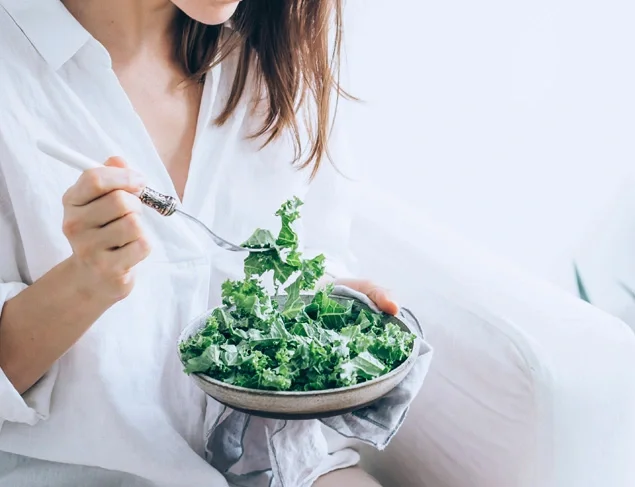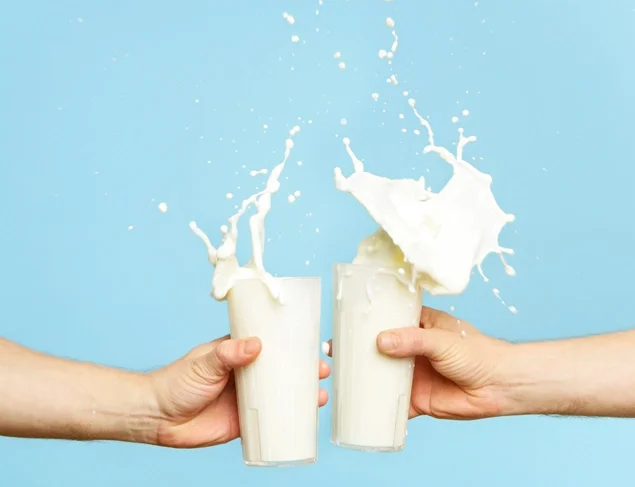Calcium is an essential nutrient required by our body for normal development and maintenance of our bones, blood clotting, as well for the proper functioning of our nerves, muscles, and cardiac (heart) function.
Meeting your calcium requirements on a low FODMAP diet can be a little harder as easy sources of calcium, like dairy, are often high FODMAP. But it’s not impossible! Here’s how to get enough calcium on a low FODMAP diet.
How much calcium do we need?
Many studies have shown that a diet low in calcium has been shown to be associated with osteoporosis (weakening of bones), which can lead to fractures. Based on the Australian Nutrient Reference Values, our requirement for calcium varies depending on our age and gender.
Generally, to achieve an adequate intake of calcium you need to aim for at least 2-3 portions of calcium-rich foods per day.
low FODMAP diet
low FODMAP diet

Low FODMAP vegetables list
Have you been told time and time again to eat more vegetables? Are you unsure about which veggies are considered low FODMAP? Here's the lowdown.
Of all the calcium we consume, 99% of the calcium is stored in our bones, where it provides structure and strength, and the remaining 1% is found in the blood, muscle and other tissues in our body.
This means that when we see our calcium levels on our blood tests, this is not a true indication of our calcium stores. This value represents <1% of your total calcium. If you are concerned about your calcium intake and storage you will need to take a look at your main storage site – your bones! This can be done by getting a bone mineral density scan (BMD scan).
Low FODMAP sources of calcium
Dairy foods – specifically cow’s milk and its derivatives – are known the be the richest and best-absorbed sources of calcium. However, many dairy products contain naturally occurring sugar, known as lactose. Lactose is known to increase gastrointestinal symptoms for some people with irritable bowel syndrome (IBS) and in those who are lactose intolerant. For some, this means that they generally restrict or completely avoid dairy food sources to avoid these symptoms.
Below is a list of some other sources of calcium, which are low FODMAP and can help you reach your recommended daily intake of calcium.
1. Non-dairy milk
low FODMAP diet
low FODMAP diet

Low FODMAP milk alternatives – which is best?
Milk giving you IBS symptoms? Discover low FODMAP milk alternatives, along with serving size recommendations and nutritional information here today!
Almond milk or rice milk which is fortified with >100mg of calcium per 100mL of milk are great low fodmap sources of calcium and can be an easy way to reach your calcium target per day – especially if you eat cereal with milk or drink coffee with milk.
Non-dairy milk doesn’t naturally contain much calcium, so it is therefore extremely important that they are fortified. This is basically when they add the nutrient/s into the product to make it more nutritious.
2. Fish with edible bones
Sardines and canned salmon are rich in calcium, due to their edible bones. 1 can of sardines equals to approximately 35% of your daily calcium requirements, and 21% of your daily calcium needs are found in 85g of canned salmon. Other seafood such as clams, mackerel and anchovies are also good sources of calcium.
3. Dark leafy green vegetables
Green leafy vegetables such as kale, broccoli, bok choy, watercress, mustard greens and collard greens are all sources of calcium and can be consumed on the low FODMAP diet. Other great vegetables that are sources of calcium and low FODMAP include sweet potato, okra and celeriac.
Just remember to always check the Monash FODMAP app for recommended serving sizes for these veggies.
4. Seeds
Many seeds are good sources of calcium such as chia, sunflower seeds and sesame seeds.
5. Plain firm tofu
Plain firm tofu that is set with calcium (firming agent 516). It’s important to read the ingredients of tofu, as not all tofu is made the same. Some are set with magnesium chloride, whilst others are set with calcium sulphate. A low fodmap serving of firm tofu is equal to 160g which is ~1090mg of calcium.
What can interfere with your calcium absorption?
The bio-availability of calcium varies between different types of food. Meaning that some foods that contain calcium are better absorbed by our body than others. Spinach is a good example of this. Spinach is naturally high in calcium, however, is a poor source of calcium for humans. This is because our bodies cannot extract and absorb the calcium from the spinach well.
The two main ‘blockers’ of calcium absorption are:
- Phytic acid is found mostly in seeds, nuts, grains and certain raw legumes and can reduce calcium absorption when eaten in combination. Luckily, cooking, fermenting, soaking or sprouting these foods can reduce the phytic acid content, meaning the nutrients become more available to us to absorb.
- Oxalates that come from foods such as spinach, rhubarb, almonds, cashews and peanuts reduce the calcium absorption from the food they are present in. Unlike phytic acid, there is, unfortunately, no way to increase the bioavailability of the calcium found in these foods.
Other factors that can also interfere with calcium absorption include excess caffeine, excess alcohol, smoking, excess salt, excess protein, corticoid steroids as well as low vitamin D.
How to enhance your calcium absorption
Vitamin D, also known as the ‘sunshine vitamin’, plays an essential role in the absorption of calcium from the gut and in optimising bone health. Vitamin D comes from two sources. These are through direct sunlight (approximate 10-15 minutes of sunlight per day) and diet. Food sources of vitamin D include fatty fish, liver and fortified food products like milk, orange juice and cereal.
Vitamins D, E, C and K as well as magnesium assists in absorbing calcium as well as increasing bone mass.
Exercise is also very important.
What about calcium supplements?
Generally, dietitians always recommend food first, however in some in cases supplementation is needed. There are two main supplements types:
- Calcium carbonate – requires stomach acid in order for the calcium to be absorbed. Therefore these supplements are needed to be taken with a meal.
- Calcium citrate – is not dependent on stomach acid. This means that the supplement can be taken at any time, with or without food.
Be sure to check out the labels of supplements to see how many tablets and any special instructions on how to take them.
Need help with the low FODMAP diet? Our FREE dietitian developed program will guide you through it, step-by-step. Includes a low FODMAP food guide. Sign up now.
If you are experiencing gut symptoms and have not been recommended a low FODMAP diet by a health professional, get started with the manage your gut symptoms program.
Reviewed by the healthylife Advisory Board March 2022


